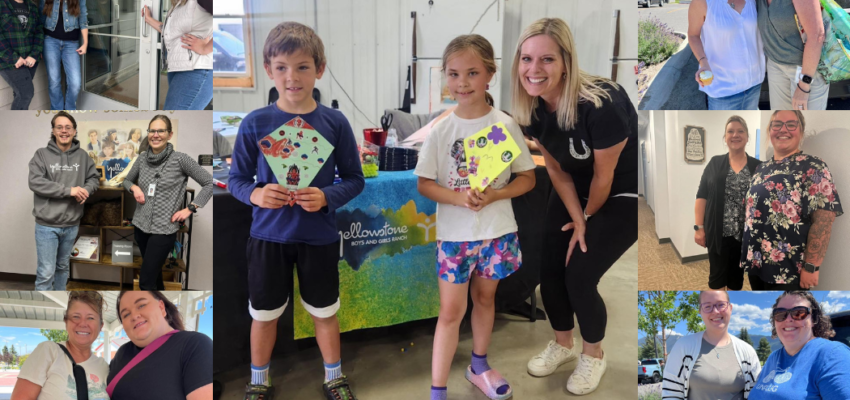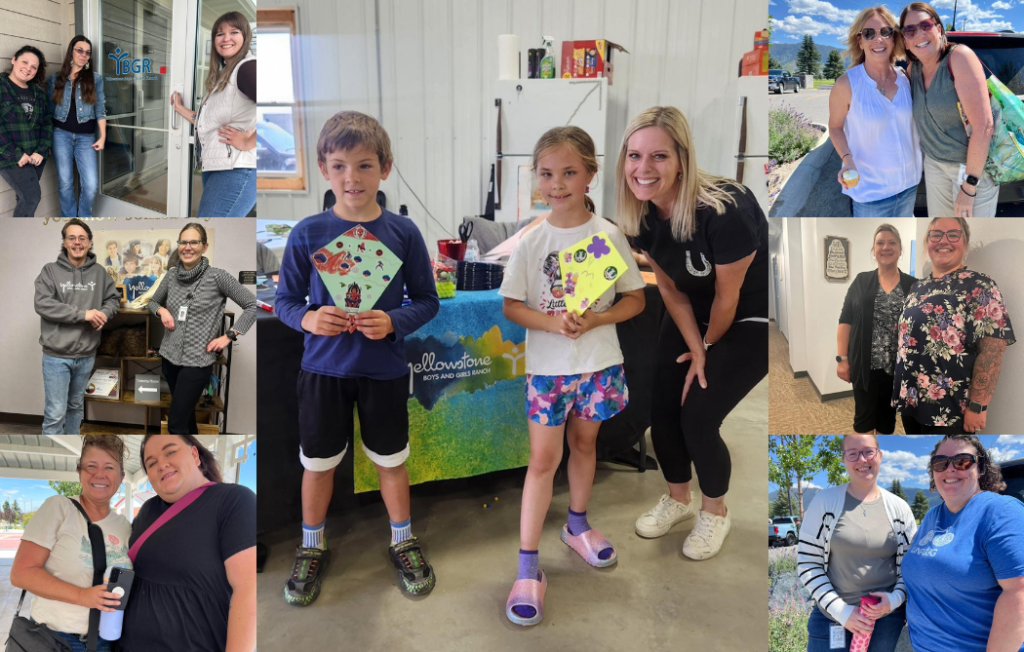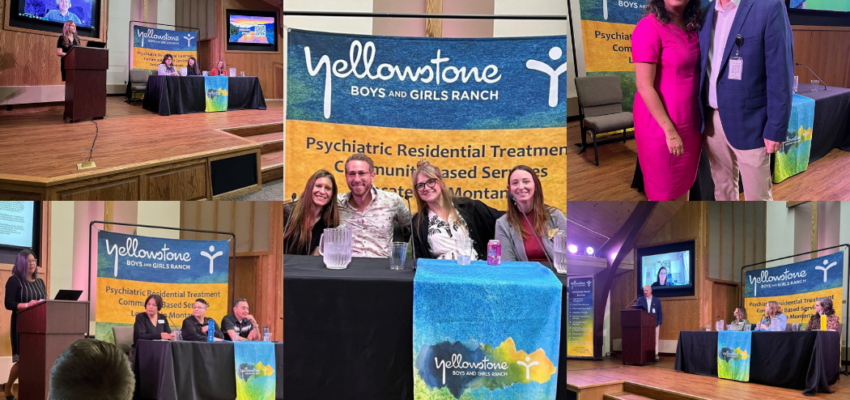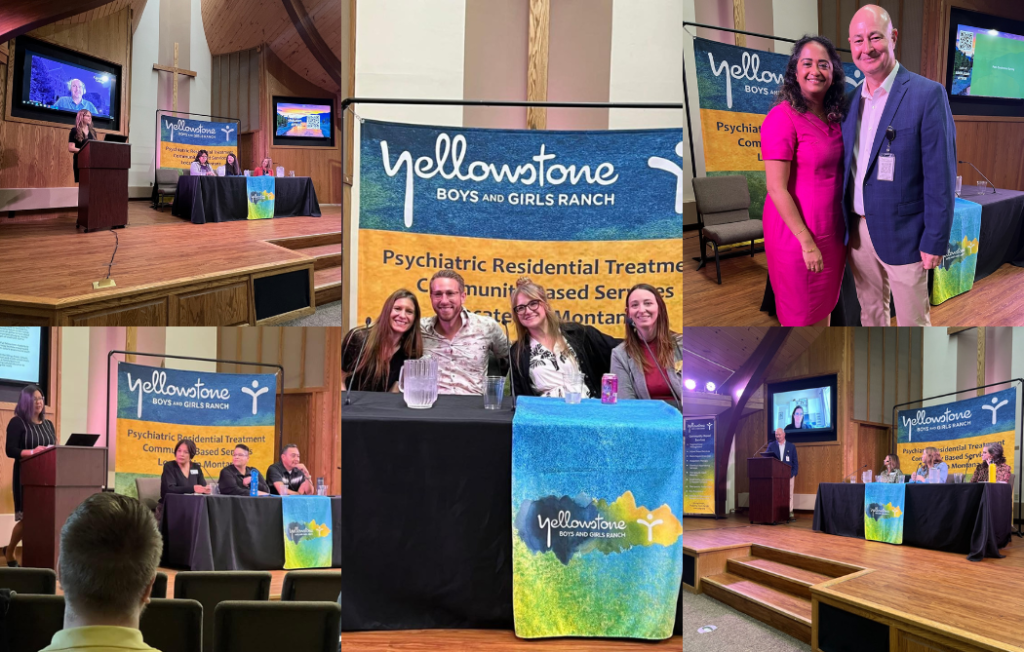
What Difference Can One Year Make for Montana Youth Mental Health?

When it comes to Montana youth mental health, one year can change everything. For kids and families across the state, it’s meant more access to care, more stability, and more hope.
This month marks one year since Youth Dynamics (YDI) joined Yellowstone Boys and Girls Ranch (YBGR)—a partnership grounded in compassion, collaboration, and commitment to strengthening the continuum of care for youth and families. Together, we’ve expanded our reach, unified our systems, and built a stronger foundation for healing across Montana.
Expanding Reach and Impact
In the past year, our team of over 740 caring people across YBGR and Yellowstone Academy has made a measurable difference. We’ve seen a 46% increase in youth served through therapeutic group homes, giving more kids a safe, supportive place to heal and grow.
These homes are more than programs—they’re communities where young people build relationships, rediscover purpose, and gain the skills they need for a successful future. This growth reflects not only increased capacity but the heart of our shared mission: helping kids and families thrive close to home.
Strengthening Systems That Support Care
Behind each success is a focus on stewardship and connection. Over the past year, YBGR has implemented streamlined systems that enhance how we work, communicate, and support one another. These improvements allow teams to spend more time where it matters most—caring for youth and families.
Together, we’re building a stronger, more responsive behavioral health system—one that ensures kids receive the right care, at the right time, close to home.
Stay Connected
Stay tuned to our news updates for the latest from across Montana, and follow us on social media. You can find us on LinkedIn at Yellowstone Boys and Girls Ranch, Instagram at @ybgr_cares, and Facebook at Yellowstone Boys and Girls Ranch and YBGR.

Leaders Unite to Strengthen Care for Kids at the Yellowstone Conference

What moves the needle for kids? At this year’s Yellowstone Conference, the answer was clear—we are stronger together.
Under the theme “Stronger Together: Building Strategic Partnerships for Lasting Impact,” leaders from across Montana’s behavioral health, education, and nonprofit sectors gathered to share expertise, strengthen relationships, and explore collaborative solutions that reach beyond any one organization.
The conversations weren’t just inspiring—they were practical, thoughtful, and rooted in action. Every discussion pointed to one truth: lasting change happens when we work side by side.
The takeaway was simple but powerful: none of us can do this alone. Together, we can move the needle in ways that change lives for Montana kids and families.
Building Stronger Systems of Care
Throughout the day, panel discussions highlighted how connection, trust, and shared goals lead to stronger, more resilient systems of care. From deepening partnerships with Native communities to strengthening Montana’s behavioral health workforce, each session emphasized collaboration as the foundation of progress.
These exchanges moved beyond theory to what works in practice: aligning systems, listening to communities, and ensuring kids receive the right care, at the right time, in the right place.
Thank You to Our Yellowstone Conference Participants
Much gratitude to every speaker who brought their expertise, insight, and leadership to this year’s conference. Your voices shaped meaningful dialogue and drove forward a shared vision for Montana’s youth.
Panelists included:
- Clint Valandra – Indigenous Education Coordinator, Billings Public Schools
- Charlene “Charli” Sleeper – Founder, MMIP Billings Advocacy Project; Mental Health Worker, Yellowstone Boys and Girls Ranch
- Sunny Day Real Bird – Director of American Indian Outreach, Montana State University Billings
- David R. Blaine – CEO, Crow Times Youth and Elder Works
- James C. Petrovich, PhD, MSW – Professor & Department Chair; Founding Director, Master of Social Work Program, Carroll College
- Kate Chapin, MSW, LCSW – Executive Director, Center for Children, Families, and Workforce Development, University of Montana
- Becky Lyons, EdD – Director of Career & Employment Services, Montana State University Billings
- Jen Chancellor, MBA – University Development Counselor, Grand Canyon University
- Matt Leavenworth, PhD, LCPC – Founder, Pay Love Forward; Vice Chair, Yellowstone County Suicide Prevention Coalition
- Nina Hernandez – Executive Director, Friends of the Children – Eastern Montana; Nonprofit Leader & Consultant
- Dennis Sulser, EdD – Retired CEO, Youth Dynamics; 40-Year Education & Healthcare Leader
- Sarah Music – Director of Coordinated School Health, Montana Office of Public Instruction
- Sierra Riesberg – Social Services & Behavioral Health Systems Leader
- Erika Purington, MS – CEO, Allies in Aging; Leadership Coach & Nonprofit Executive
- Meghan Peel – Interim Division Administrator, Behavioral Health & Developmental Disabilities Division, Montana DPHHS
- Kirsten Smith, MPA, PMP – Principal, Bloom Consulting, LLC
Keynote Speaker:
- Mohini Venkatesh – Chief of Staff, National Council for Mental Wellbeing
We’re grateful for your time and contribution to advancing collaborative care for youth and families across Montana.
Learn More: Meet our Yellowstone Conference panelists and keynote speaker, Mohini Venkatesh.
Thanking Our Sponsors
Special thanks to our conference sponsors, Grand Canyon University and Love INC–Yellowstone County, for helping make this event possible and for their commitment to strengthening Montana’s systems of care.
Moving Forward
The Yellowstone Conference reaffirmed a collective belief: progress happens when people work together. Across every discussion, one message stood out — collaboration builds the foundation for lasting impact.
Together, we’re creating opportunities, strengthening relationships, and preparing youth for life.
Stay Connected
Stay tuned to our news updates for the latest from across Montana, and follow us on social media. You can find us on LinkedIn at Yellowstone Boys and Girls Ranch, Instagram at @ybgr_cares, and Facebook at Yellowstone Boys and Girls Ranch and YBGR.

Mohini Venkatesh, MPH, Chief of Staff of the National Council for Mental Wellbeing | Yellowstone Conference 2025

Keynote Speaker
Mohini Venkatesh, MPH, joined the National Council in 2007, serving in numerous positions leading quality improvement, workforce, consulting, and business development initiatives before assuming her newly established role as chief of staff within the Office of the CEO in October 2022. A connector of people, ideas, and initiatives, she works closely with the CEO, board of directors, and other leadership in navigating the National Council’s growth and internal changes to better position its impact against its mission and strategic goals.
By building connections with the National Council’s membership over several years, she has seen the impact of those working to improve mental wellbeing and the escalating challenges they face, such as workforce shortages and social determinants impacting access to care. Inspired by the resolve of others to do good, she strives for the National Council — alongside its members — to positively influence the lives of people in the U.S. with mental health and substance use challenges to ensure access to care when and where they need it. She believes in the organization’s vision for the future and using every means possible — policy, training and education; a vast and diverse network; and more — to develop greater understanding of the challenges surrounding mental health and substance use treatment and promote solutions of impact.
Venkatesh’s career has also included work at a hospital-based psychiatric unit, several social service nonprofit organizations, and a state association advocating for community mental health and substance use services. She received her master’s degree in public health from Yale University and her bachelor’s degree in psychology from the University of Massachusetts-Amherst.
Mohini Venkatesh’s Role at the 2025 Yellowstone Conference
As keynote speaker, Mohini Venkatesh will headline the 2025 Yellowstone Conference with the theme Stronger Together: Building Strategic Partnerships for Lasting Impact, highlighting how cross-sector collaboration fuels sustainable change.
More About the Yellowstone Conference
Visit our Yellowstone Conference event page to learn more and register.

Kirsten Smith, MPA, PMP, Principal, Bloom Consulting, LLC | Yellowstone Conference 2025

Panelist | Bridging Sectors, Building Futures
Kirsten Smith is Bloom Consulting, LLC’s principal. She has over 13 years of experience working with state and local clients on a wide range of projects. Kirsten is a project manager, researcher, facilitator, writer, and evaluator. She enjoys and has deep experience working with diverse clients and topics.
Kirsten is trained as a facilitator and strategic planner using methods developed by the Institute of Cultural Affairs. She is also a certified Project Management Professional through the Project Management Institute. She holds a Master of Public Affairs from the LBJ School of Public Affairs and a Master of Arts in Russian, East European, and Eurasian Studies from the University of Texas at Austin.
Kirsten is also an active community member, volunteering as a:
- Court Appointed Special Advocate (CASA) for children in the Child Protective Services system
- Fundraiser, instructor, and previous board member for the Montana Ballet Company
Kirsten Smith’s Role at the 2025 Yellowstone Conference
At the 2025 Yellowstone Conference, Kirsten Smith will join the Bridging Sectors, Building Futures panel, where she’ll share her expertise in public-private partnerships for sustainable change.
More About the Yellowstone Conference
Visit our Yellowstone Conference event page to learn more and register.

Meghan Peel, Interim Division Administrator, Behavioral Health & Developmental Disabilities Division, Montana DPHHS | Yellowstone Conference 2025

Panelist | Bridging Sectors, Building Futures
Meghan Peel is currently the Interim Division Administrator of the Behavioral Health and Developmental Disabilities Division at the Montana Department of Public Health and Human Services (DPHHS). Meghan has also served as the Deputy Division Administrator of BHDD and Director of the Children’s Mental Health Bureau within DPHHS.
Prior to joining DPHHS, she managed the CHIP program and was part of the implementation and operations team for Medicaid Expansion. During her tenure with the department, she has focused on working closely with providers and stakeholders to evaluate and improve services within the continuum of care.
Additionally, Meghan holds a degree in Business Accounting and worked in both public and private accounting for seven years prior to joining DPHHS.
Meghan Peel’s Role at the 2025 Yellowstone Conference
At the 2025 Yellowstone Conference, Meghan Peel will join the Bridging Sectors, Building Futures panel, where she’ll share her expertise in public-private partnerships for sustainable change.
More About the Yellowstone Conference
Visit our Yellowstone Conference event page to learn more and register.

Matt Bugni, CEO, AWARE | Yellowstone Conference 2025

Panelist | Bridging Sectors, Building Futures
Matt Bugni joined AWARE in January of 2011, performing various leadership and business development roles prior to becoming AWARE’s Chief Executive Officer in November of 2018.
He pursued his undergraduate education at St. John’s University in Minnesota before returning to Montana. Prior to his time at AWARE, Matt worked as a direct support professional for a psychiatric hospital; he also performed budgeting and finance roles for the State of Montana in the Governor’s Budget Office and Department of Public Health and Human Services.
Matt is a passionate advocate for community-based disability services. Matt and his wife, Katy, have four adult sons of whom they are immensely proud. Matt and Katy’s family has diverse ethnicities and disabilities which drives their passions to be constant learners and active participants in our communities.
Matt is a Montana native. He enjoys daily hikes with his wife, hunting, mountain biking, listening to and playing music, and traveling around the world.
Matt Bugni’s Role at the 2025 Yellowstone Conference
At the 2025 Yellowstone Conference, Matt Bugni will join the Bridging Sectors, Building Futures panel, where he’ll share his expertise in public-private partnerships for sustainable change.
More About the Yellowstone Conference
Visit our Yellowstone Conference event page to learn more and register.

Erika Purington, MS, CEO, Allies in Aging; Leadership Coach & Nonprofit Executive | Yellowstone Conference 2025

Panelist | Bridging Sectors, Building Futures
Erika Purington is a dynamic leader, coach, and changemaker whose career spans nonprofit leadership, executive coaching, and community transformation. Based in Billings, she currently serves as CEO of Allies in Aging: Senior Services, Lifelong Support, where she led the bold merger of two senior service agencies into a unified, future-focused organization.
With a master’s in Rehabilitation and Mental Health Counseling from Montana State University Billings, Erika has held executive roles across youth, family, and senior service organizations—including Tumbleweed, STEP, and Girl Scouts of Montana & Wyoming. She also founded SheLeads and EW Coaching & Consulting, helping leaders and teams thrive.
A certified Presence-Based Leadership Coach, Erika is known for blending empathy and accountability—her “superpower”—to inspire transformation. She is a sought-after keynote speaker and facilitator, offering audiences fresh perspectives, humor, and practical tools for leading through complexity and change.
Erika Purington’s Role at the 2025 Yellowstone Conference
At the 2025 Yellowstone Conference, Erika Purington will join the Bridging Sectors, Building Futures panel, where she’ll share her expertise in public-private partnerships for sustainable change.
More About the Yellowstone Conference
Visit our Yellowstone Conference event page to learn more and register.

Sierra Riesberg, Social Services & Behavioral Health Systems Leader | Yellowstone Conference 2025

Panelist | Bridging Sectors, Building Futures
Sierra Riesberg has over 10 years of experience in the social services field, working in both rural and urban communities, as well as within behavioral health, intellectual/developmental, and aging populations.
She is a systems-level thinker and wants to break down barriers for anyone who needs to access services, as well as barriers for service providers to be able to deliver the services that community members need.
Additionally, she believes that complex problems cannot be solved by one person or one agency alone; unique perspectives and collaboration are key to the progression and development of our social services system.
Sierra Riesberg’s Role at the 2025 Yellowstone Conference
At the 2025 Yellowstone Conference, Sierra Riesberg will join the Bridging Sectors, Building Futures panel, where she’ll share her expertise in public-private partnerships for sustainable change.
More About the Yellowstone Conference
Visit our Yellowstone Conference event page to learn more and register.

Mike Chavers, MA, CEO | Yellowstone Conference 2025

Moderator | Bridging Sectors, Building Futures
Mike Chavers joined YBGR in August of 2016 as the Chief Executive Officer. Born and raised in Idaho, Chavers pursued his education and career in Illinois. Before moving to Montana, he worked at Indian Oaks Academy, Nexus, for 22 years. Most recently, he served as the Executive Director of the organization.
Chavers holds a Master of Arts in Counseling from Olivet Nazarene University and a Bachelor of Arts in Communications from the Moody Bible Institute. He is a fellow at Georgetown University’s Center for Juvenile Justice Reform.
Mike is married to Michelle. They have three daughters—Caroline, Olivia, and Chloe. Besides spending time with his family, Mike enjoys fishing, the outdoors, and supporting the arts, particularly live music.
Mike Chavers’ Role at the 2025 Yellowstone Conference
At this year’s Yellowstone Conference, Mike Chavers will moderate the “Bridging Sectors, Building Futures” panel, where he’ll lead a discussion on public-private partnerships for sustainable change.
More About the Yellowstone Conference
Visit our Yellowstone Conference event page to learn more and register.

Sarah Music, Director of Coordinated School Health, Montana Office of Public Instruction | Yellowstone Conference 2025

Panelist | Mission-Driven Collaboration
Sarah Music is the Director of Coordinated School Health at the Montana Office of Public Instruction. With a decade of experience in public health, her work has focused on crucial areas like mental health, suicide prevention, youth resiliency, and substance misuse.
In her current role, she advances initiatives in school safety, mental health, tobacco prevention, and high-quality afterschool programs.
In her free time, she enjoys spending time with her family, golfing, hiking, and playing board games.
Sarah Music’s Role at the 2025 Yellowstone Conference
At the 2025 Yellowstone Conference, Sarah Music will join the Mission-Driven Collaboration panel, where she’ll share her expertise in uniting youth-serving organizations for greater reach.
More About the Yellowstone Conference
Visit our Yellowstone Conference event page to learn more and register.
